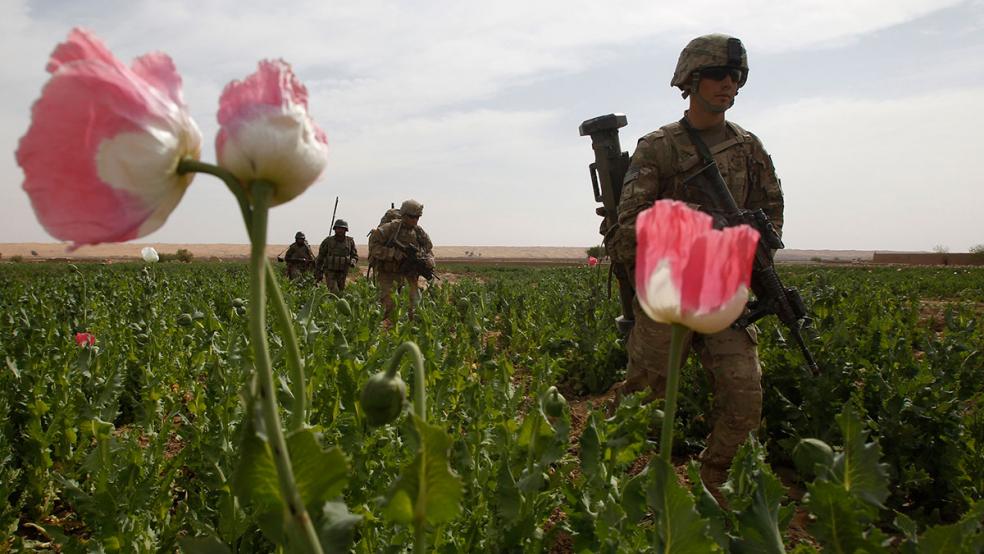The U.S. commander in Afghanistan on Tuesday suggested that a large contingent of American troops may remain in the country after President Obama leaves office in 2017.
Gen. John Campbell told the Senate Armed Services Committee that he had recommended the president revisit his long-held plan to slash the U.S. troop presence from its present level of about 9,800 to an embassy-like security force of around 1,000 in Kabul after 2016.
Related: Obama Rewrites His Syria Plan, but Is It a Strategy?
"If we go to a normal embassy presence … we would have very limited train and advise capability,” according to Campbell. "It will take much longer to train Afghan forces in many of those critical areas."
Reports have been circulating in recent days that the administration is considering a plan to keep up to 5,000 soldiers in Afghanistan after 2016.
That’s a fraction of the 100,000 soldiers that were deployed in the country a few years ago, but any residual force breaks Obama’s campaign vow to bring the war in Afghanistan to a close and get American troops out of the war-ravaged country by the time he leaves office.
Campbell didn’t detail the troop levels he is recommending to the president.
Related: Across arc of conflict, 'Obama Doctrine' shows signs of failure
White House press secretary Josh Earnest said “what the future presence looks like and what our future strategy will be in Afghanistan will be determined by a variety of things,” including conditions on the ground, what resources the U.S. can provide the Afghan government and what threats remain in the country.
The president will consult with the officials from the intelligence and diplomatic communities as well as Pentagon leadership and NATO allies, he added.
If recent history is any indication, the president is likely to choose keeping a larger footprint in the country.
Obama rolled out his Afghanistan timeline in 2014 and was immediately criticized for setting what opponents viewed an arbitrary, politically motivated deadline. But at the beginning of 2015 he showed he wasn’t wedded to the plan, halting the draw down and not cutting the force to 5,600 troops at the behest of the new government in Kabul.
Related: How the U.S. Wasted Billions of Dollars Rebuilding Afghanistan
On Tuesday, Campbell rattled off a list of reasons why Obama should reevaluate the existing plan, including “an increased al Qaeda presence” and an upsurge in insurgent violence in some areas of Afghanistan, and highlighted the battle with the Taliban for control of the provincial city of Kunduz.
That fight took on a whole new dimension when the four-star general admitted that a weekend airstrike on a medical clinic run by Doctors Without Borders, which killed at the 22 people, was cleared “within the U.S. chain of command.” Campbell promised a full investigation into the incident.
For their part, lawmakers seem to support keeping U.S. troops in Afghanistan for the foreseeable future, even if the exact details are unknown.
"I just don't understand why this administration doesn't understand if we do what is presently planned to begin in three months from now, we'll see the Iraq movie again. There's no doubt in anybody's mind about that,” said Senate Armed Services chair John McCain (R-AZ), one of Obama’s top national security critics.
“It seems to me that would lend some urgency to action which would reverse what is clearly a deteriorating trend,” he added.
Campbell is slated to appear before the House Armed Services Committee on Thursday, where will likely find an even more sympathetic audience for stopping the withdrawal.
A group of 22 committee members, including panel chair Mac Thornberry (R-TX), sent a letter to Obama urging him to keep the troop level in Afghanistan at 9,800 through the end of 2016.





